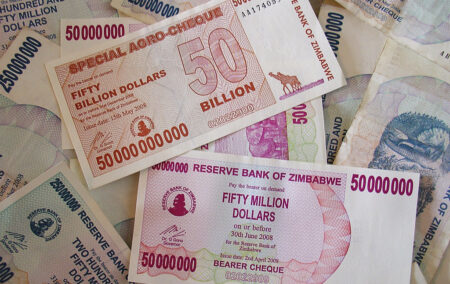Zimbabwe has reached a new stage of monetary dysfunction. Because of a lack of small change, businesses have started printing their own “money”—scraps of paper, sometimes handwritten, that customers can use to pay for future purchases. Others are handing out change in-kind, making customers whole with juice boxes, pens or slices of cheese.
In the early 2000s former President Robert Mugabe government printed more and more money to compensate for a collapse in agricultural production following the controversial redistribution of white-owned farms.
After monthly inflation peaked, by one measure, at 79.6 billion percent, the government in 2009 abolished the Zimbabwe dollar and began using U.S. dollars.
That switch brought a few years of monetary stability, until the Reserve Bank of Zimbabwe could no longer meet the demand for U.S. dollars.
In 2019, the central bank reintroduced the Zimbabwe dollar, changing U.S. dollar-denominated savings and domestic government debts into a local currency of rapidly declining value.
Now $1 costs more than 900 Zimbabwean dollars and inflation hit 230% in January. Most businesses once again demand payments in U.S. dollars.
One-dollar notes are also often in short supply. So paper IOUs are issued but in contrast to bank notes, which are usually made from cotton or plastic, paper chits don’t survive wear and tear.
Barter trades include slices of cheese, extra sauce and hard-boiled egg instead of more paper chits. Those barter trades usually don’t offer good value for money, but they’re better than carrying around, or losing, vouchers from multiple places.
Small stores keep a book with the names of customers they still owe money to behind the counter or scrawl amounts yet to be reimbursed on receipts. Some clients, fearing that a shopkeeper won’t remember, have taken to filming those exchanges on their phones.

